10 High-Performance Vegetables for Your Garden
Discovering the right vegetables to grow in your garden can be a game-changer for both your culinary adventures and your health. In this guide, we will explore 10 high-performance vegetables that not only thrive in various climates but also provide impressive yields and nutritional benefits. Whether you're a seasoned gardener or just starting out, these vegetables are sure to enhance your garden's success and your dinner plate!
Tomatoes are a garden staple, known for their versatility and high yield. They thrive in warm weather and can be grown in various soil types, making them a favorite among gardeners. Did you know that tomatoes are technically a fruit? This juicy delight comes in numerous varieties, from sweet cherry tomatoes to robust beefsteaks, allowing you to choose the perfect type for your culinary needs. Plus, growing them can be incredibly rewarding—there’s nothing quite like the taste of a fresh, sun-ripened tomato picked straight from your garden!
Peppers come in various types and colors, adding flavor and nutrition to your garden. From sweet bell peppers to spicy jalapeños, they are relatively easy to grow and can produce a bountiful harvest with proper care. Peppers love the sun and well-drained soil, so make sure to plant them in a spot that gets plenty of light. With their vibrant colors and diverse flavors, peppers can transform any dish from ordinary to extraordinary.
Carrots are root vegetables that thrive in loose, sandy soil. They are not only nutritious but also provide a satisfying crunch, making them a popular choice for home gardens. What’s more, growing carrots can be a fun experience for kids, as they get to see the transformation of tiny seeds into long, orange roots. Just remember to keep the soil well-aerated and weed-free for the best results. Plus, the satisfaction of pulling a fresh carrot from the ground is hard to beat!
Spinach is a nutrient-dense leafy green that grows quickly, making it ideal for successive planting. Its versatility in the kitchen adds to its appeal for home gardeners. Whether you’re tossing it into a salad, blending it into a smoothie, or sautéing it with garlic, spinach can elevate any meal. Plus, it thrives in cooler temperatures, so you can enjoy fresh greens even in the spring and fall!
Zucchini is a prolific producer, often yielding more than gardeners can consume. This summer squash is easy to grow and can be harvested throughout the growing season. If you’ve ever been gifted a giant zucchini from a neighbor, you know just how productive these plants can be! They’re perfect for grilling, baking, or even spiralizing into healthy noodles. Be prepared to get creative with recipes, as you might find yourself with an abundance of this versatile vegetable.
Beans are nitrogen-fixing plants that enrich the soil while providing a high yield. They are easy to grow and can be harvested fresh or dried for later use. With a variety of types to choose from—like green beans, black beans, and kidney beans—there’s a bean for every palate. Plus, they make a fantastic addition to salads, stews, and side dishes, providing both protein and fiber to your meals.
Kale is a nutrient powerhouse that thrives in cooler temperatures. Its hardiness and ability to produce throughout the season make it a valuable addition to any garden. Known for its health benefits, kale can be used in salads, smoothies, or even baked into crispy chips. Its robust leaves are not only delicious but also provide a wealth of vitamins and minerals, making it a favorite among health enthusiasts.
Radishes are fast-growing root vegetables that can be harvested in just a few weeks. Their crisp texture and peppery flavor make them a delightful addition to salads and dishes. Plus, they’re a great way to introduce kids to gardening, as they sprout quickly and are ready to eat in no time. With a variety of colors and shapes, radishes can also add a pop of color to your garden beds!
Cucumbers are refreshing and hydrating vegetables that grow quickly in warm weather. They can be eaten fresh or pickled, providing versatility for any home gardener. Whether you prefer them in salads, sandwiches, or as crunchy snacks, cucumbers are a summer favorite. Just be sure to give them enough space to spread out, as these vines love to grow!
- What is the best time to plant these vegetables? Most of these vegetables thrive in the spring or early summer, but some, like kale and spinach, can be planted in the fall as well.
- How can I ensure a high yield from my garden? Regular watering, proper soil preparation, and pest management are key to achieving high yields.
- Do these vegetables require a lot of maintenance? While some vegetables require more care than others, many of the options listed are relatively low-maintenance once established.
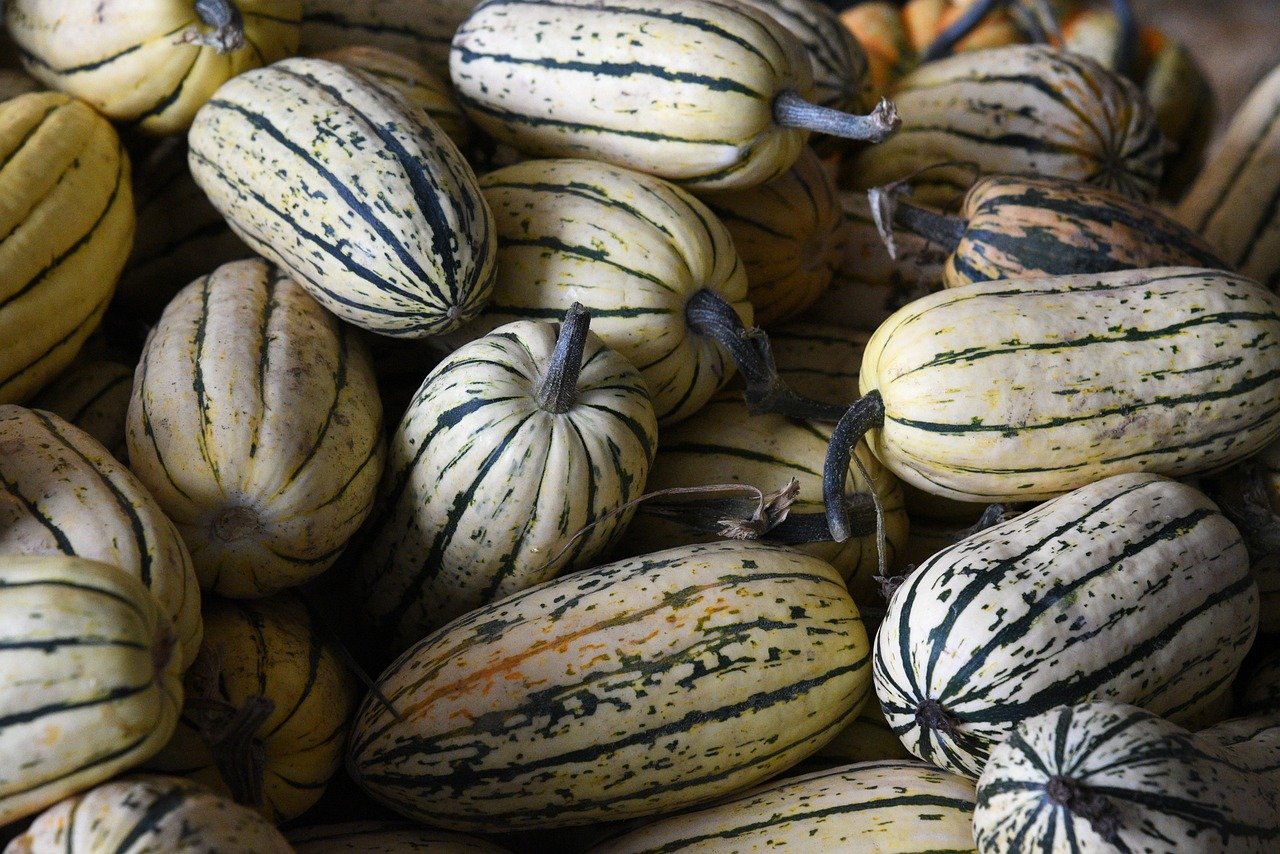
1. Tomatoes
Discover the top vegetables that thrive in various climates, providing high yields and nutritional benefits. This guide will help you choose the best options for your garden's success.
Tomatoes are not just a garden staple; they are the crown jewels of home gardening! Their vibrant colors and juicy flavors can elevate any dish, making them a must-have for any vegetable patch. These versatile beauties thrive in warm weather, basking in the sun's rays while delivering high yields that can satisfy even the most ambitious gardener. But wait, there’s more! Tomatoes come in a kaleidoscope of varieties, from the sweet cherry tomatoes that burst with flavor to the robust beefsteak types that are perfect for sandwiches. What’s not to love?
Growing tomatoes is relatively straightforward, but there are a few tips to ensure you get the most out of your plants. First, they prefer well-drained, nutrient-rich soil. A mix of compost and organic matter will do wonders for their growth. Additionally, spacing is key. Plant your tomatoes at least 18 to 24 inches apart to allow for proper air circulation, which helps prevent diseases. And remember, regular watering is essential, especially during dry spells. Aim for consistent moisture, but avoid waterlogging your plants. Nobody likes soggy roots!
Here’s a quick rundown of some popular tomato varieties you might want to consider:
| Variety | Description | Best Use |
|---|---|---|
| Cherry | Small, sweet, and perfect for snacking. | Salads, appetizers |
| Beefsteak | Large and meaty with a rich flavor. | Sandwiches, burgers |
| Roma | Thick flesh and fewer seeds, great for sauces. | Cooking, canning |
| Heirloom | Unique flavors and colors, often grown for taste. | Salads, fresh eating |
As you embark on your tomato-growing journey, keep in mind that these plants can also be susceptible to pests and diseases. Regularly check for signs of aphids, spider mites, or blight. A little vigilance goes a long way! Plus, you can always companion plant with herbs like basil, which not only enhances the flavor of your tomatoes but also helps ward off pests.
In conclusion, tomatoes are a fantastic choice for any gardener looking to make the most of their space. With just a bit of care and attention, you can enjoy a bountiful harvest that will have your friends and family coming back for more. So, are you ready to roll up your sleeves and dig into the world of tomatoes?
- What is the best time to plant tomatoes? Tomatoes thrive when planted after the last frost date in your area, typically in late spring.
- How often should I water my tomatoes? Aim for deep watering once or twice a week, depending on the weather conditions.
- Can I grow tomatoes in containers? Absolutely! Just ensure your container is at least 5 gallons for optimal growth.

2. Peppers
Peppers are not just a feast for the eyes with their vibrant colors; they are also a powerhouse of flavor and nutrition that can elevate any garden. Whether you prefer the sweet crunch of bell peppers or the fiery kick of jalapeños, there's a pepper variety for everyone. These plants are relatively easy to grow, making them a popular choice for both novice and experienced gardeners alike. With the right care, you can expect a bountiful harvest that will keep your kitchen stocked with fresh produce.
One of the best things about peppers is their adaptability. They thrive in warm weather and can flourish in various soil types, although they prefer well-drained, nutrient-rich soil. To give your peppers the best chance of success, consider the following tips:
- Sunlight: Peppers love the sun! Aim for at least 6-8 hours of direct sunlight each day.
- Watering: Keep the soil consistently moist but not soggy. Overwatering can lead to root rot, while underwatering can stunt growth.
- Fertilization: Use a balanced fertilizer to ensure your plants receive the necessary nutrients throughout their growth cycle.
As peppers grow, you'll notice the flowers that bloom, which eventually give way to the fruit. It's a thrilling process to witness, as each flower holds the potential for a delicious pepper. Depending on the variety you choose, the harvest can be abundant. For instance, a single plant can produce anywhere from 10 to 50 peppers in a season! Imagine the joy of picking your own fresh peppers and adding them to your favorite dishes.
Moreover, peppers are not just versatile in the garden; they also shine in the kitchen. You can enjoy them raw in salads, roasted, stuffed, or even pickled. Their culinary uses are nearly endless, making them a valuable addition to your home-cooked meals. Plus, they are rich in vitamins A and C, making them a nutritious choice for your family.
In terms of varieties, here are some popular options you might consider:
| Variety | Flavor Profile | Heat Level (Scoville) |
|---|---|---|
| Bell Pepper | Sweet and mild | 0 |
| Jalapeño | Spicy with a hint of sweetness | 2,500 - 8,000 |
| Serrano | Bright and crisp | 2,500 - 5,000 |
| Habanero | Fruity and extremely hot | 100,000 - 350,000 |
In conclusion, peppers are more than just a colorful addition to your garden; they are a versatile ingredient that can enhance your culinary creations. With their ease of growth and high yield, they are perfect for gardeners looking to maximize their harvest. So why not plant a few pepper plants this season and enjoy the fruits of your labor? You’ll be glad you did!
Q: When is the best time to plant peppers?
A: Peppers should be planted after the last frost date in your area, usually in late spring when the soil temperature is consistently above 70°F (21°C).
Q: How do I know when my peppers are ready to harvest?
A: Peppers are typically ready to harvest when they reach their full size and color. For most varieties, this is when they have turned their mature color, which can vary from green to red, yellow, or orange.
Q: Can I grow peppers in containers?
A: Absolutely! Peppers do well in containers as long as they have enough space for their roots to grow. Choose a pot that is at least 5 gallons in size for optimal growth.
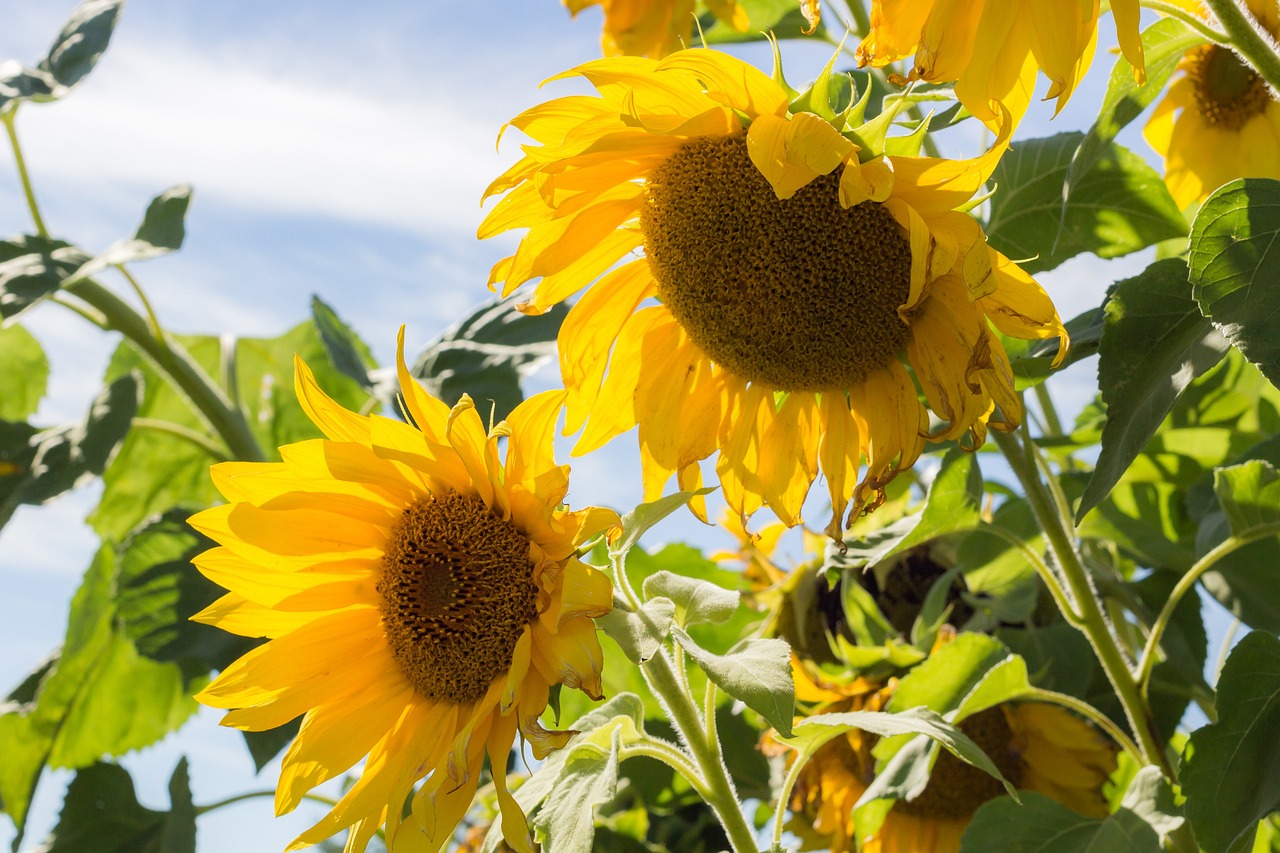
3. Carrots
Carrots are not just any ordinary root vegetable; they are a crunchy delight that brings both color and flavor to your garden. These vibrant orange beauties thrive in loose, sandy soil, allowing their roots to grow deep and wide. If you've ever bitten into a fresh carrot, you know that satisfying crunch and the burst of sweetness that follows. But did you know that growing carrots can be an incredibly rewarding experience, especially for novice gardeners?
One of the best things about carrots is their adaptability. They can be planted in early spring or late summer, depending on your climate, which means you can enjoy multiple harvests throughout the year. Plus, they are relatively low-maintenance, making them perfect for busy individuals or families. Just ensure that you keep the soil moist, and you'll be well on your way to a bountiful harvest.
Carrots come in various shapes and sizes, from the classic long and slender varieties to shorter, round ones. This diversity not only adds visual interest to your garden but also allows you to choose the type that best suits your culinary needs. For instance, Danvers and Nantes are popular choices for their sweetness and crisp texture, while Parisian carrots are perfect for those with limited space, growing in compact forms.
Another exciting aspect of growing carrots is their nutritional benefits. They are rich in beta-carotene, which your body converts into vitamin A, essential for good vision and skin health. Additionally, carrots are packed with fiber, making them a great choice for digestive health. So not only do they taste good, but they also contribute to your overall well-being!
When planting carrots, consider the following tips to ensure success:
- Soil Preparation: Before planting, loosen the soil to a depth of at least 12 inches. This helps the roots grow straight and prevents them from becoming stunted.
- Spacing: Sow the seeds about 2-4 inches apart to give them room to grow. Thin them out later if they crowd each other.
- Watering: Keep the soil consistently moist, especially during dry spells. However, avoid overwatering, as this can lead to rot.
In conclusion, carrots are a fantastic addition to any home garden. Their ease of growth, coupled with their numerous health benefits and culinary versatility, make them a must-have for gardeners of all skill levels. So, grab your seeds, prepare your soil, and get ready to enjoy the fruits of your labor—crunchy, delicious carrots!
Q: How long do carrots take to grow?
A: Carrots typically take about 70 to 80 days to reach maturity, depending on the variety and growing conditions.
Q: Can I grow carrots in containers?
A: Yes! Carrots can be successfully grown in containers as long as the pot is deep enough (at least 12 inches) to accommodate their roots.
Q: What pests should I watch out for when growing carrots?
A: Common pests include carrot flies and aphids. Regularly check your plants and use organic pest control methods if necessary.
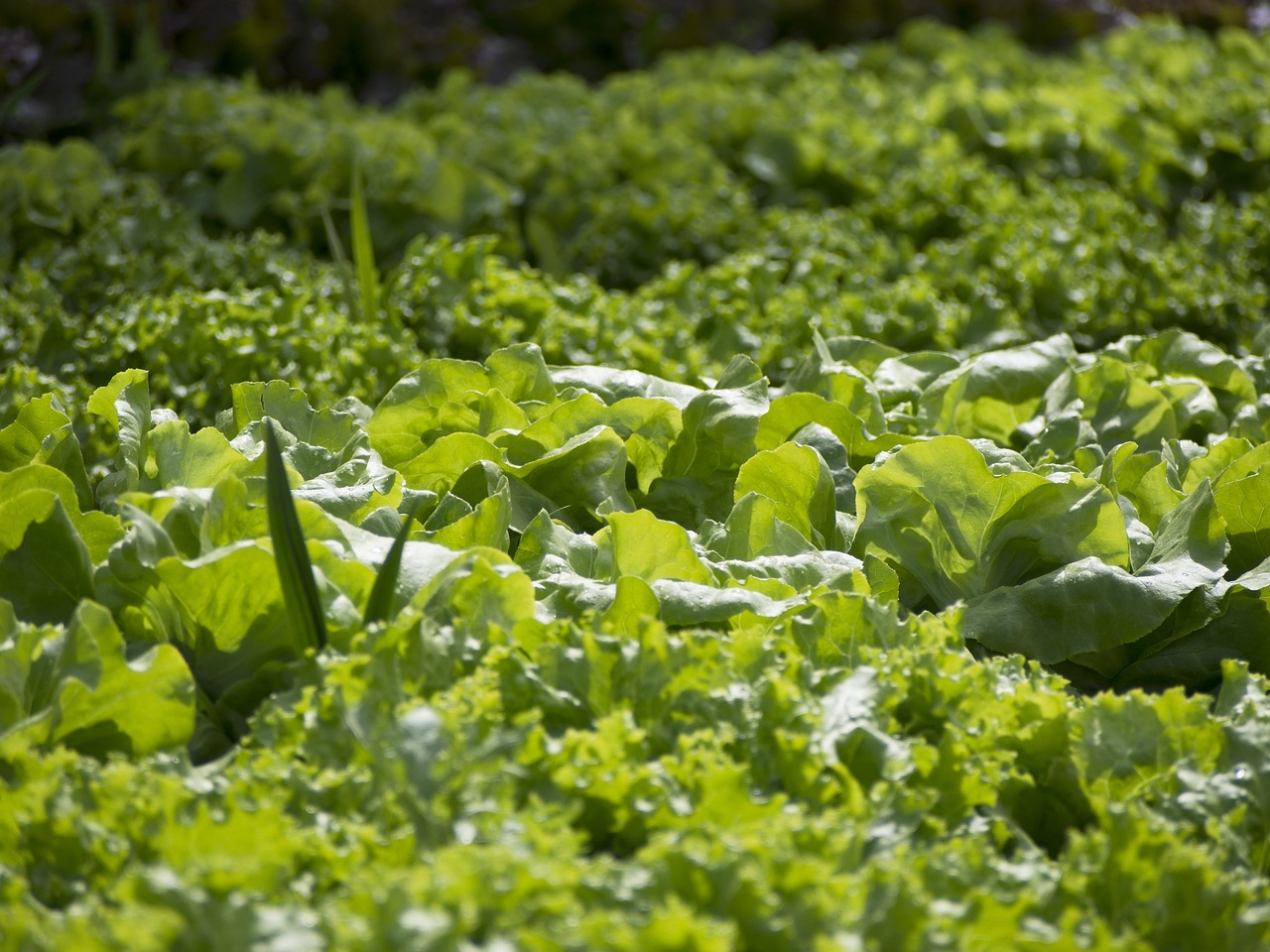
4. Spinach
Spinach is not just a leafy green; it's a superfood that has captured the hearts of gardeners and chefs alike. Known for its rapid growth and incredible nutritional profile, spinach is a must-have in any garden. Imagine stepping into your backyard and plucking fresh spinach leaves for a salad or a smoothie – it’s not just healthy, it’s also a delightful experience!
This leafy green thrives in cooler temperatures, making it ideal for spring and fall planting. Spinach loves well-drained, fertile soil enriched with organic matter. If you want to give your spinach the best chance to flourish, consider the following tips:
- Soil Preparation: Ensure the soil is rich in nutrients. Adding compost can significantly enhance soil quality.
- Watering: Spinach prefers consistent moisture, so regular watering is essential, especially during dry spells.
- Sunlight: While spinach can tolerate some shade, it thrives in full sun for at least 6 hours a day.
One of the best things about spinach is its versatility. You can enjoy it raw in salads, sautéed as a side dish, or blended into smoothies for a nutrient boost. Plus, spinach can be harvested at various stages – whether you prefer baby spinach for salads or mature leaves for cooking, the choice is yours!
Another exciting aspect of spinach is its ability to be grown in succession. With a little planning, you can sow seeds every couple of weeks, ensuring a continuous supply throughout the growing season. This not only maximizes your yield but also keeps your garden vibrant and full of life.
In terms of nutrition, spinach is a powerhouse. It’s loaded with vitamins A, C, and K, as well as iron and calcium. This makes it a fantastic addition to your diet, especially if you’re looking to boost your overall health. Incorporating spinach into your meals can lead to benefits such as improved eye health, reduced oxidative stress, and even enhanced muscle strength.
So, whether you're a seasoned gardener or a newbie, spinach is an excellent choice for your garden. With its quick growth, nutritional benefits, and culinary versatility, it’s no wonder that spinach has earned its place as a garden favorite. Get ready to enjoy the fruits of your labor as you watch your spinach thrive!
Q1: How often should I water my spinach?
A: Spinach likes consistent moisture. Water it regularly, especially during dry periods, but avoid waterlogging the soil.
Q2: Can I grow spinach in containers?
A: Yes! Spinach grows well in containers. Just make sure the container is deep enough for the roots and has good drainage.
Q3: What pests should I watch out for when growing spinach?
A: Common pests include aphids and leaf miners. Regularly inspect your plants and consider using organic pesticides if necessary.
Q4: Is spinach a cool-season crop?
A: Yes, spinach thrives in cooler temperatures, making it perfect for spring and fall planting.
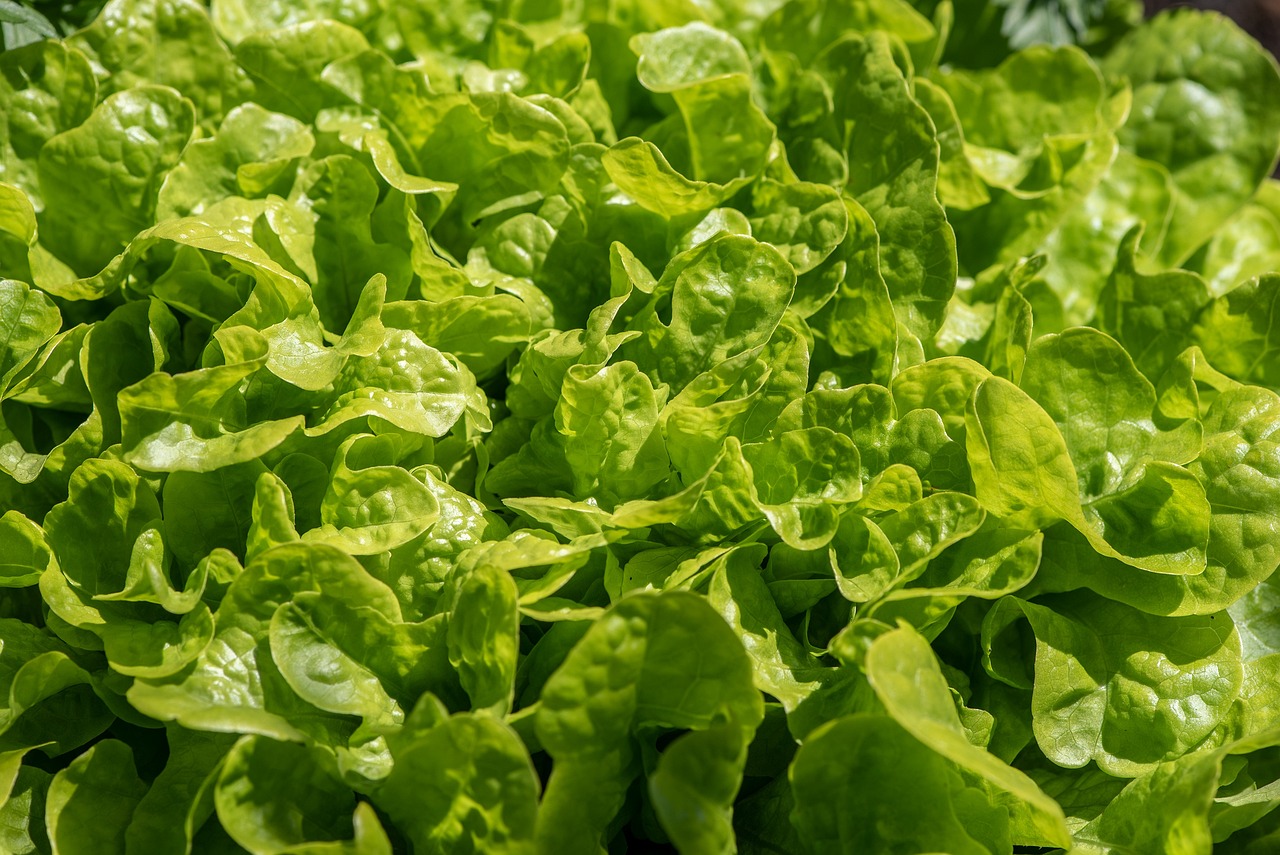
5. Zucchini
Zucchini, often referred to as summer squash, is a true garden superstar. Its ability to produce an abundant harvest makes it a favorite for both novice and experienced gardeners alike. Imagine stepping into your garden and being greeted by the vibrant green of zucchini plants, their leaves sprawling out like a welcoming embrace. This vegetable not only adds a splash of color to your garden but also offers a plethora of culinary possibilities. From stir-fries to salads, zucchini is incredibly versatile and can be used in a variety of dishes, making it a staple in many kitchens.
One of the most appealing aspects of growing zucchini is its prolific nature. With the right conditions, a single plant can yield dozens of zucchinis throughout the growing season. This means you can enjoy fresh, homegrown produce for weeks on end. To get the most out of your zucchini plants, consider these essential tips:
- Sunlight: Zucchini thrives in full sun, so ensure your plants receive at least 6 to 8 hours of direct sunlight each day.
- Soil: Well-drained, rich soil is crucial. Amending your soil with compost can provide the necessary nutrients for robust growth.
- Watering: Consistent watering is key. Keep the soil moist but not waterlogged to avoid root rot.
Another fascinating aspect of zucchini is its rapid growth. You can almost watch it grow before your eyes! Typically, zucchini can be harvested within just 50 to 70 days after planting. This quick turnaround means you'll have fresh veggies on your table in no time. Plus, harvesting them regularly encourages the plant to produce even more. Just be cautious not to let them grow too large; smaller zucchinis are often more tender and flavorful.
In terms of nutrition, zucchini packs a punch. It's low in calories and high in vitamins A and C, making it a healthy addition to any diet. Furthermore, it's a great source of fiber, which can aid in digestion and help you feel full longer. So, not only are you growing a bountiful crop, but you're also contributing to your health and well-being!
To sum it up, zucchini is a must-have for any garden. Its high yield, ease of growth, and nutritional benefits make it a winning choice. Whether you're looking to experiment with new recipes or simply enjoy the satisfaction of growing your own food, zucchini is sure to deliver. So grab your gardening gloves and get ready to cultivate this remarkable vegetable!
Q: How often should I water my zucchini plants?
A: Zucchini plants prefer consistent moisture. Water them deeply once a week, or more frequently during hot, dry spells.
Q: What pests should I watch out for when growing zucchini?
A: Common pests include squash bugs and cucumber beetles. Regularly check your plants and consider using organic pesticides if necessary.
Q: Can I grow zucchini in containers?
A: Absolutely! Just ensure the container is large enough (at least 5 gallons) and has good drainage.
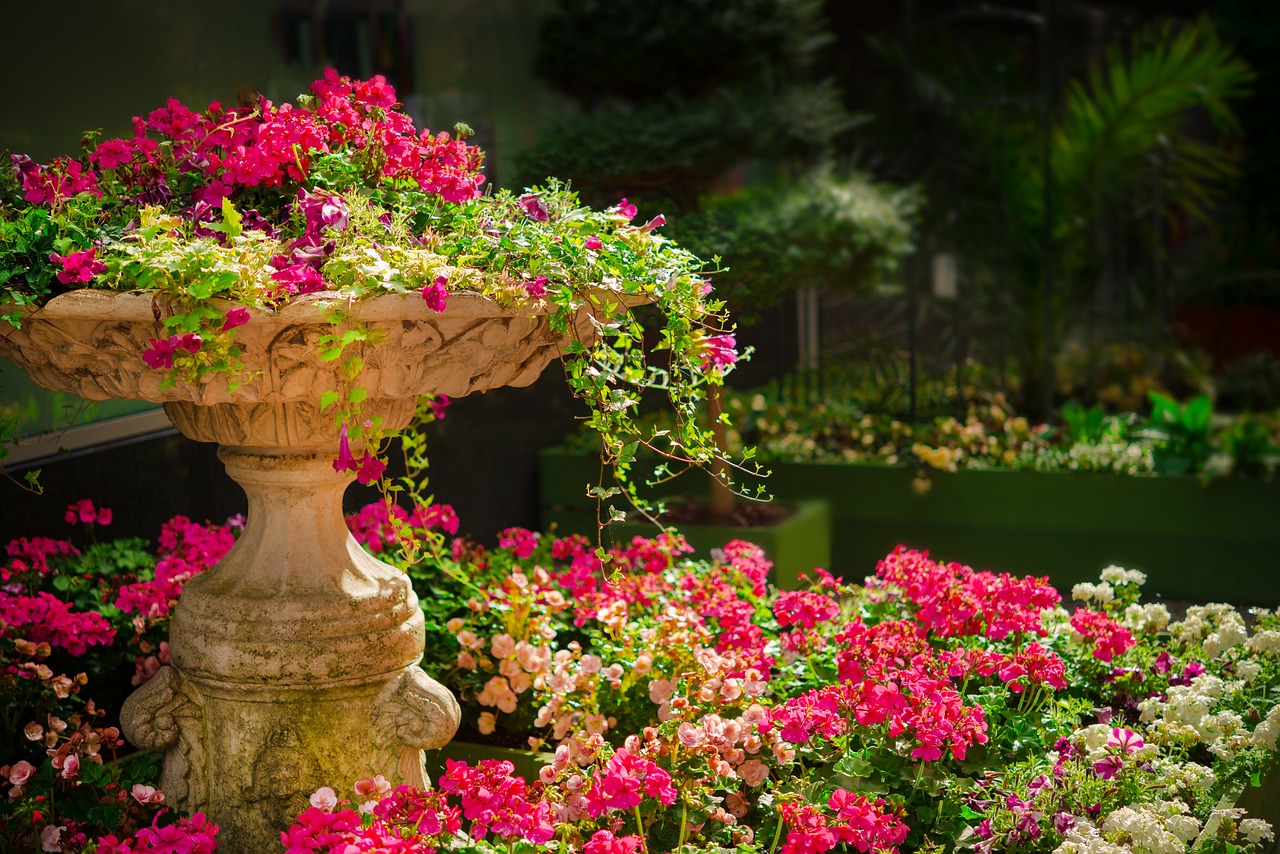
6. Beans
Beans are not just a tasty addition to your meals; they are also a gardening superstar! These nitrogen-fixing plants are like nature's little helpers, enriching your soil while providing a bountiful harvest. Imagine planting a seed and watching it transform into a vibrant green vine, bursting with potential. With a variety of types available, from kidney and black beans to green beans and snap peas, there's a bean for every palate and dish.
One of the best things about growing beans is their ease of cultivation. They thrive in a range of soil types and can adapt to various climates, making them suitable for almost any garden. Whether you live in a warm, sunny area or a cooler region, you can find a bean variety that will flourish. For instance, bush beans are perfect for smaller spaces as they don’t require staking, while pole beans can climb trellises, maximizing your garden's vertical space.
When it comes to nutrition, beans are a powerhouse. They are rich in protein, fiber, and essential vitamins, making them an excellent choice for those looking to boost their health. Not only do they offer substantial nutritional benefits, but they also contribute to a sustainable gardening practice by improving soil health. This dual role makes them a favorite among eco-conscious gardeners.
Here’s a quick look at some popular bean varieties you might consider:
| Bean Variety | Growth Type | Nutritional Benefits |
|---|---|---|
| Green Beans | Bush or Pole | High in vitamins A, C, and K |
| Kidney Beans | Bush | Rich in protein and fiber |
| Black Beans | Bush | High in antioxidants |
| Snap Peas | Climbing | Good source of vitamins C and K |
To ensure a successful bean harvest, consider these tips:
- Planting Time: Beans prefer warm soil, so wait until after the last frost to plant.
- Watering: Keep the soil consistently moist but not waterlogged for optimal growth.
- Support: If you're growing pole beans, provide a trellis or support structure for them to climb.
Beans can be enjoyed fresh, dried, or canned, making them a versatile ingredient in your kitchen. From hearty chili dishes to refreshing salads, the possibilities are endless. Plus, with their high yield, you might find yourself with an abundance of beans to share with friends and family. So, why not dig in and start your bean garden today? You’ll be amazed at how much joy these little wonders can bring to your table!
Q1: How long does it take for beans to grow?
A1: Most beans take about 50 to 70 days from planting to harvest, depending on the variety.
Q2: Can beans be grown in containers?
A2: Yes! Many bean varieties, especially bush beans, can thrive in containers as long as they have enough space and support.
Q3: Do beans need a lot of sunlight?
A3: Beans prefer full sun, so try to plant them in a location that receives at least 6-8 hours of sunlight per day.
Q4: How can I prevent pests from eating my beans?
A4: Regularly inspect your plants, use row covers, and consider companion planting to deter pests naturally.
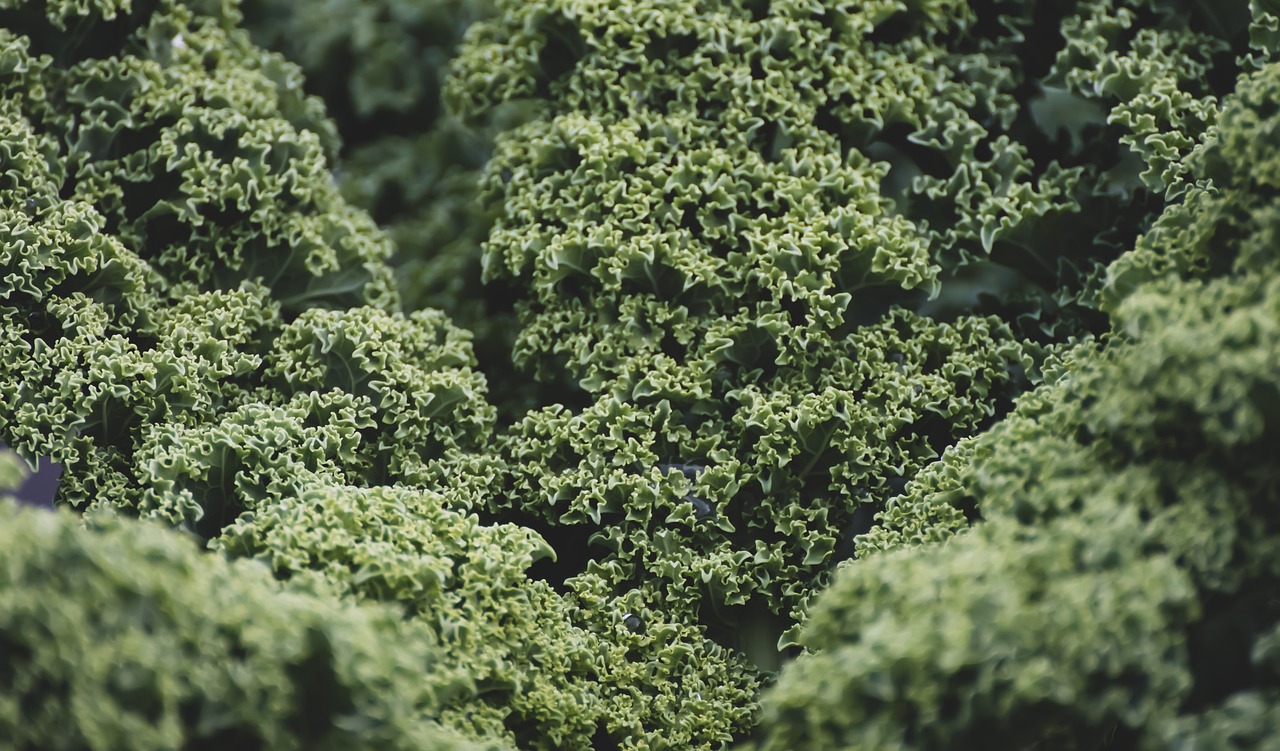
7. Kale
Kale is often hailed as a superfood, and for good reason! This leafy green is not only packed with nutrients but also thrives in cooler temperatures, making it a fantastic choice for gardeners in various climates. If you're looking to boost your garden’s nutritional profile, kale should definitely be on your radar. Its leaves are rich in vitamins A, C, and K, as well as minerals like calcium and potassium. Imagine stepping into your garden and plucking fresh, vibrant leaves that can be tossed into a salad or blended into a smoothie. Sounds appealing, right?
One of the best things about kale is its hardiness. Unlike many other vegetables that wilt at the first sign of frost, kale actually becomes sweeter after a cold snap. This characteristic makes it a resilient option for fall and winter gardening. You can expect to enjoy this leafy delight from early spring until late fall, and even into winter in some regions. Isn’t it amazing how nature provides us with such resilience?
Growing kale is relatively simple, and it can adapt to various soil types, although it prefers rich, well-draining soil. Here are some tips to ensure a successful kale harvest:
- Soil Preparation: Enrich your soil with compost to provide the necessary nutrients.
- Watering: Keep the soil consistently moist but not soggy. Kale loves water!
- Spacing: Give your plants enough room to grow; spacing them about 12 to 18 inches apart will allow for good air circulation.
In addition to its nutritional benefits, kale is incredibly versatile in the kitchen. You can enjoy it raw in salads, sautéed with garlic, or blended into soups. The possibilities are endless! Plus, kale can be preserved by freezing or dehydrating, allowing you to enjoy its benefits year-round. Think of it as your garden’s gift that keeps on giving!
For those considering growing kale, you might be interested in the different varieties available. Here’s a quick comparison:
| Variety | Flavor Profile | Best Use |
|---|---|---|
| Curly Kale | Robust and slightly bitter | Salads and garnishes |
| Lacinato Kale | Sweet and tender | Raw salads and cooking |
| Red Russian Kale | Sweet with a hint of pepper | Stir-fries and smoothies |
In conclusion, kale is more than just a trendy vegetable; it’s a nutritional powerhouse that can elevate your garden and your meals. Whether you’re a seasoned gardener or just starting, incorporating kale into your garden is a decision you won’t regret. So, grab your seeds, prepare your soil, and get ready to enjoy the many benefits that this leafy green has to offer!
Q: How often should I water kale?
A: Kale prefers consistent moisture, so aim to water it about 1-2 times a week, depending on your climate and soil conditions.
Q: Can kale survive winter?
A: Yes, kale can survive winter in many regions, especially if protected from harsh winds and covered with mulch.
Q: What pests should I watch out for?
A: Common pests include aphids and cabbage worms. Regularly inspecting your plants and using organic pest control methods can help keep them at bay.

8. Radishes
Radishes are a fantastic choice for any garden, and they often surprise gardeners with their rapid growth and vibrant colors. These fast-growing root vegetables can be harvested in as little as three to four weeks after planting, making them one of the quickest options for those eager to enjoy the fruits of their labor. With their crisp texture and peppery flavor, radishes can add a delightful crunch to salads, sandwiches, and various dishes. But did you know that they also come in a variety of shapes and colors? From traditional red globes to white icicles and even black radishes, there's a type for every palate.
Growing radishes is not only easy but also rewarding, especially for novice gardeners. They thrive in cool weather, making them perfect for early spring or fall planting. They prefer well-drained soil enriched with organic matter, but they can adapt to a variety of soil types. Just remember to keep the soil consistently moist to prevent them from becoming woody or bitter. Here’s a quick glance at some of the most popular radish varieties:
| Radish Variety | Color | Days to Maturity |
|---|---|---|
| Cherry Belle | Red | 25 |
| French Breakfast | Red and White | 28 |
| Black Spanish | Black | 60 |
| White Icicle | White | 30 |
What’s even more exciting is that radishes are not just a single crop; they can be used as a cover crop to improve soil health. Their deep root systems help break up compacted soil, allowing for better air and water penetration. Plus, when you pull them out, they create space for subsequent crops. This makes them a great companion plant, especially when paired with slower-growing vegetables that will benefit from the improved soil structure.
In addition to their gardening benefits, radishes are also packed with nutritional value. They are low in calories but high in vitamins C and B6, potassium, and fiber. Eating radishes can help boost your immune system, improve digestion, and even support heart health. So, not only do they add flavor and texture to your meals, but they also contribute to a balanced diet.
In conclusion, if you’re looking for a vegetable that is quick to grow, easy to care for, and beneficial for both your garden and your health, radishes should definitely be on your planting list. Their versatility in the kitchen and ability to thrive in various conditions make them a must-have for any home gardener.
- How often should I water radishes? Radishes prefer consistent moisture but avoid overwatering. Water them about once a week, ensuring the soil is moist but not soggy.
- Can I grow radishes in containers? Absolutely! Radishes do well in containers as long as they have enough depth (at least 6 inches) for root development.
- What pests should I watch out for? Common pests include aphids and flea beetles. Regularly inspect your plants and consider using organic pest control methods if needed.

9. Cucumbers
Discover the top vegetables that thrive in various climates, providing high yields and nutritional benefits. This guide will help you choose the best options for your garden's success.
Tomatoes are a garden staple, known for their versatility and high yield. They thrive in warm weather and can be grown in various soil types, making them a favorite among gardeners.
Peppers come in various types and colors, adding flavor and nutrition to your garden. They are relatively easy to grow and can produce a bountiful harvest with proper care.
Carrots are root vegetables that thrive in loose, sandy soil. They are not only nutritious but also provide a satisfying crunch, making them a popular choice for home gardens.
Spinach is a nutrient-dense leafy green that grows quickly, making it ideal for successive planting. Its versatility in the kitchen adds to its appeal for home gardeners.
Zucchini is a prolific producer, often yielding more than gardeners can consume. This summer squash is easy to grow and can be harvested throughout the growing season.
Beans are nitrogen-fixing plants that enrich the soil while providing a high yield. They are easy to grow and can be harvested fresh or dried for later use.
Kale is a nutrient powerhouse that thrives in cooler temperatures. Its hardiness and ability to produce throughout the season make it a valuable addition to any garden.
Radishes are fast-growing root vegetables that can be harvested in just a few weeks. Their crisp texture and peppery flavor make them a delightful addition to salads and dishes.
Cucumbers are not just any ordinary vegetable; they are the refreshing jewels of the summer garden! Known for their hydrating properties, cucumbers thrive in warm weather and can grow incredibly fast. These delightful veggies can be eaten fresh, pickled, or added to salads, making them a versatile choice for any home gardener.
When planting cucumbers, it’s essential to provide them with plenty of sunlight and well-draining soil. They enjoy warmth, so planting them after the last frost is ideal. Cucumbers can spread out, so giving them ample space to grow is crucial. You might even consider using trellises to maximize your garden space!
Here are some quick tips to ensure your cucumber plants flourish:
- Watering: Keep the soil consistently moist but not soggy.
- Fertilizing: Use a balanced fertilizer to promote healthy growth.
- Pest control: Watch out for pests like cucumber beetles and take action promptly.
With proper care, cucumber plants can produce an abundance of fruit throughout the growing season. Imagine walking into your garden and picking fresh cucumbers to toss into a salad or blend into a refreshing smoothie. It’s not just gardening; it’s a lifestyle!
1. How often should I water my cucumbers?
Water cucumbers deeply once a week, ensuring the soil stays moist, especially during dry spells.
2. Can I grow cucumbers in containers?
Absolutely! Just make sure the container is large enough (at least 5 gallons) and has good drainage.
3. What are the common pests that affect cucumbers?
Common pests include cucumber beetles and aphids. Regularly inspect your plants and use organic pest control methods if necessary.
Frequently Asked Questions
- What vegetables are best for beginners to grow?
If you're just starting out, tomatoes and zucchini are fantastic choices. They're easy to grow and quite forgiving, even if you make a few mistakes along the way. Plus, they produce a lot, which is always a nice bonus!
- How much sunlight do these vegetables need?
Most high-performance vegetables, like peppers and cucumbers, thrive in full sun, which means they need at least 6-8 hours of direct sunlight each day. Think of it as their daily dose of sunshine; the more they get, the happier and healthier they'll be!
- Can I grow these vegetables in containers?
Absolutely! Many of these vegetables, such as tomatoes and peppers, do great in containers. Just make sure your pots are big enough and have good drainage. It’s like giving them their own little apartment to thrive in!
- What soil type is best for growing vegetables?
Loose, well-draining soil is ideal for most vegetables, particularly root crops like carrots and radishes. If your soil is too compact, it's like trying to run a marathon in tight shoes—your plants won’t be able to stretch and grow as they should!
- How often should I water my vegetable garden?
Generally, watering once a week is a good rule of thumb, but it really depends on the climate and type of vegetables. If it’s hot and dry, you might need to water more often. Just remember, it's better to give them a deep soak than to sprinkle them lightly every day!
- What pests should I watch out for?
Common pests like aphids and caterpillars can be a nuisance. Keep an eye out for any damage to your plants. If you spot trouble, there are natural remedies you can use, like neem oil, to keep those pests at bay!
- How can I tell when my vegetables are ready to harvest?
Each vegetable has its own signs of readiness. For instance, tomatoes should be a vibrant color and slightly soft to the touch, while cucumbers should be firm and green. It's like waiting for your favorite fruit to ripen—patience pays off!
- Are there any vegetables that grow well together?
Yes! This is known as companion planting. For example, tomatoes and basil are a classic combo; they help each other grow and can even enhance flavors. Think of it as planting a garden party where everyone gets along!



















